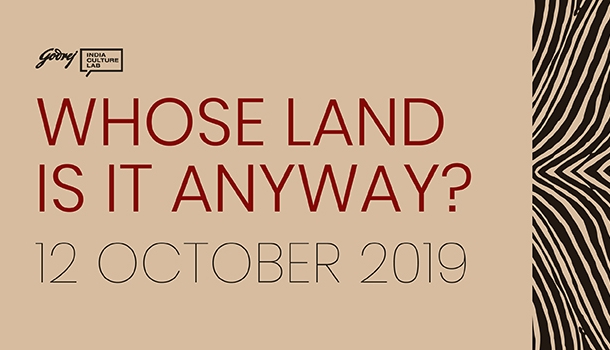The continual pursuit of developmental projects, economic expansion and rapid urbanisation has displaced communities and people across rural and urban India and caused irrevocable environmental destruction. The establishment of infrastructural projects ranging from mining industries to road projects to energy powerplants has led to the displacement of tens of thousands of tribal and indigenous populations who formerly lived, hunted, fished, and farmed in the lands that are being taken over from them. For indigenous communities such as forest dwellers, tribals, cattle grazers and fisherfolk - land is as an economic, social and cultural resource. Land is livelihood. Land is life.
These communities have cohabited their environments for centuries and have, over the years, evolved a way of life that is woven around their immediate ecologies and also ensured that their environments are protected against degradation by man and nature. The communities closest to their lands with the least ecological footprint are at the forefront of environment conservation and climate change efforts but face continual eviction and erosion of their land rights and are the ones paying the highest cost of this development.
These non-inclusive models of development are resisted by the people who are disempowered by the deprivation of their land rights, ranging from resistance movements against the Kudankulam nuclear power plant, to the people’s movement against the coastal road in Mumbai.
Thriough our event, we wanted to delve deeper and interrogate notions of development and land rights. ‘Whose Land is it Anyway?’ was an evening of conversations at the intersections of indigeneity, land rights, development, displacement, resistance and environmental conservation in contemporary India.
The evening began with a films package comprising of 3 films - Aamchi BEST by TISS SMCS, Kabza by Purabi Bose and The Woods Are Calling by Teenaa Kaur. This was followed by a conversation between Stalin Dayanand and Kalyan Varma. The event ended on a high note with a performance by Prakash Bhoir and members of the Adivasi Haq Samvardhan Samiti.
Disclaimer: Please note that seating at Culture Lab events is on first-come first served basis, and if the venue is full, the Culture Lab reserves the right to shut entry. Also, the Culture Lab does not permit any participant-audience members to engage in any marketing activity of their own with the other participant-audience members either during, before or after the Culture Lab events. Any person found to be doing so will be asked to leave and will be denied entry to attend our events at the sole discretion of the Culture Lab team. A request to our attendees to kindly not entertain any individual doing unsolicited marketing, and please report activities of this nature to our team. In case any attendee chooses to entertain anyone doing such unsolicited marketing, it will be at the risk of only the such participant-audience’s sole discretion and the Culture Lab will not in any way be responsible for any consequences thereon.



